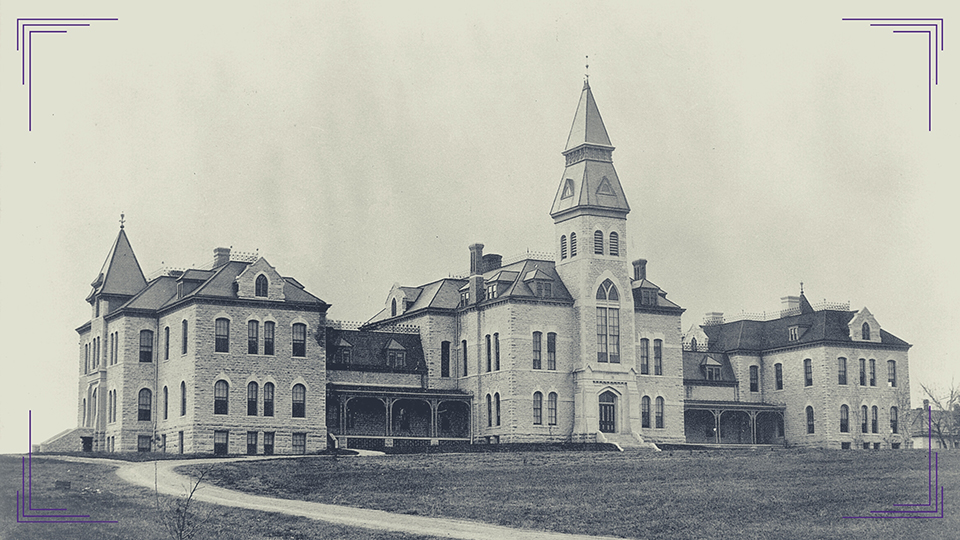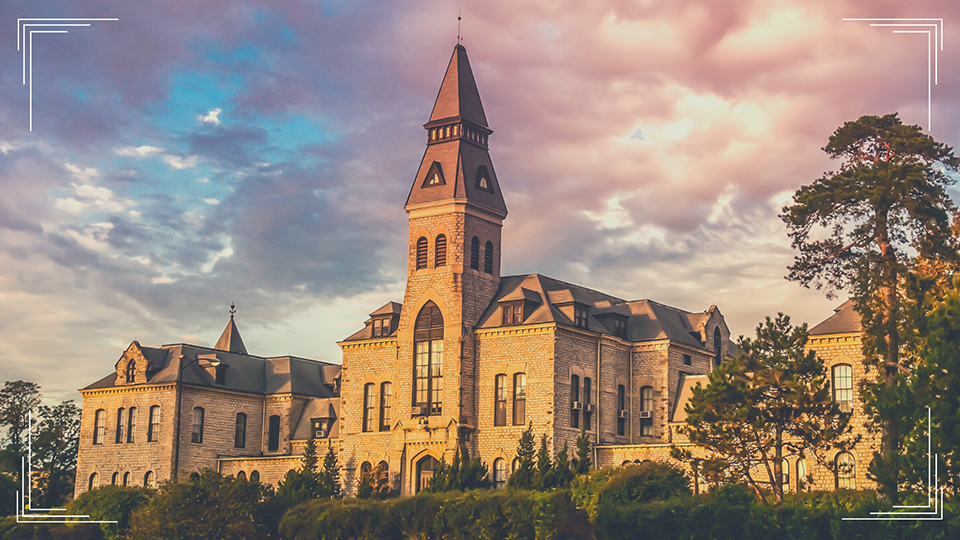Did you know? 5 facts about Anderson Hall
It’s one of the most iconic silhouettes on campus, standing proudly above the K-State
skyline. It represents more than 100 years of university history and tradition, but
even as such a familiar, well-known landmark, there are still some surprises to be
found in Anderson Hall’s past.
In the upcoming spring 2023 issue of the K-State Alumni Association’s member-exclusive
K-Stater magazine, we asked Cliff Hight, department head of K-State's Morse Department of Special
Collections, to share more about the behind-the-scenes history of Anderson Hall. Here’s
a preview of five of our favorite facts, and be sure to look for the full-length article
in the K-Stater soon!
1. A building of many names
You may already know that Anderson Hall’s name honors John Alexander Anderson, the
university’s second president (1873-1879). The building was originally known as the
Practical Agriculture Building or the Main College Building before being named Anderson
Hall in 1902. It has been used for instruction in numerous subjects, offices for administration
and academic departments, and a library, among many other uses. The president’s office
has been in the building since 1879.
2. Starting a tradition
Local builder Jacob Winne was involved with the stonework on the Anderson Hall project,
along with three earlier campus buildings. He continued using native cottonwood limestone,
establishing an aesthetic consistency for campus that remains to this day.
3. Buried treasure
Faculty voted in May 1881 for some historical college records to be buried under the
first floor vault in a sealed case with hopes that it would be “resurrected by some
curious antiquary, a thousand years hence.”
4. For whom the Anderson Hall bell tolls
The original 513-pound bell that was installed in the Bluemont College building in
1861 was moved to Anderson Hall in 1882. The college janitor or other workers rang
the bell for various reasons into the 1960s. In 1965, the storied bell was retired
from active duty and replaced with an electronic carillon. The bell remained in the
tower until 1995, when it was moved to present-day Holen Courtyard to the west of
Bluemont Hall.
5. A near disaster
On one early August morning in 1993, lightning nearly left Anderson Hall in ruins. A 3:45 a.m. lightning strike blew off the south tower’s four-foot lightning rod and started blazing. The heat triggered the sprinkler system on the east side of the second floor, which thankfully minimized the spread of flames. The fire and resulting water damage, though, caused $1.25 million (over $2.5 million today) in damage to the building.

Not yet a member of K-State Alumni Association? Make sure you’re not missing out on issues of the K-Stater and other Alumni Association benefits, and sign up now!

